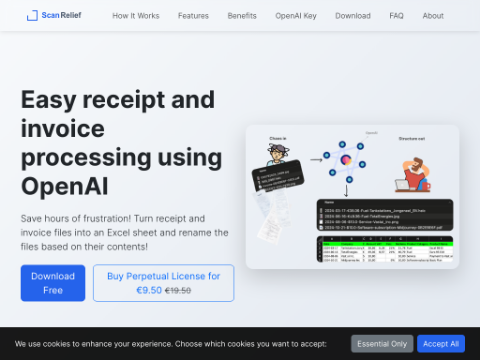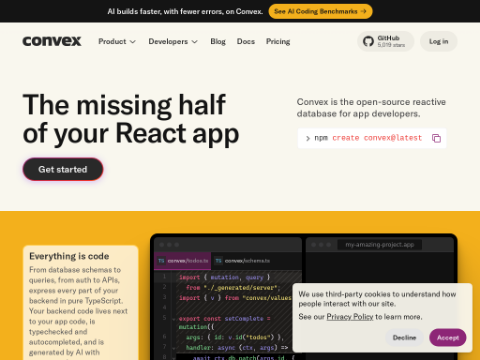A few weeks ago, DeepSeek unveiled DeepSeek R1, an inference model that delivers comparable performance at a significantly reduced cost, challenging the dominance of existing AI systems. The model leverages advanced techniques such as chain-of-thought reasoning, reinforcement learning, and the Mixture of Experts (MoE) architecture, excelling in tasks like mathematics and programming.
For many organizations, the high costs associated with training and deploying AI models have been a significant barrier, effectively excluding smaller players from participating in the AI revolution. DeepSeek R1 achieves a remarkable feat by matching or surpassing industry-leading models at just a fraction of their cost. How exactly does it achieve this? And what does it mean for the future of AI? Learn more about the story behind DeepSeek R1 and explore how it sets new standards for cost-effective, high-performance artificial intelligence, as well as how you can utilize it.
What Sets DeepSeek R1 Apart?
Brief Summary:
- DeepSeek R1 is a cost-effective AI inference model that matches or outperforms leading competitors like GPT-4 while reducing costs by 96%.
- The model incorporates cutting-edge technologies such as chain-of-thought reasoning, reinforcement learning, and the Mixture of Experts (MoE) architecture, demonstrating superior performance in mathematical and programming tasks.
- DeepSeek R1's efficiency is achieved through innovative training methods, including selective activation of subnetworks via MoE architecture, significantly reducing computational overhead.
- Reinforcement learning combined with supervised fine-tuning enhances the model's accuracy and adaptability, enabling it to independently discover optimal reasoning strategies.
- Iterative development, including model distillation, ensures high performance in resource-constrained environments, making it a powerful force in the competitive AI landscape.
DeepSeek R1 solves complex reasoning tasks by breaking them down into smaller, more manageable steps using chain-of-thought reasoning. This structured approach improves both accuracy and reliability. In benchmark tests involving mathematical and programming tasks, DeepSeek R1 performs on par with or even surpasses top-tier competitors like OpenAI's GPT-4. Notably, it achieves this at a runtime cost reduction of 96%, thanks to innovative training and inference techniques that minimize computational expenses without sacrificing performance.
The model's ability to deliver high-quality results at an extremely low cost makes it an attractive option for organizations seeking efficient AI solutions. By focusing on practical applications, DeepSeek R1 demonstrates how advanced AI can be both powerful and accessible.
The Evolution of DeepSeek Models
DeepSeek R1 represents the culmination of a series of iterative advancements, each building upon the strengths of its predecessors. The development journey highlights the company's commitment to improving AI inference capabilities while maintaining cost-effectiveness:
- DeepSeek v1 (January 2024): Introduced a traditional transformer model with feedforward neural networks, laying the groundwork for future innovations.
- DeepSeek v2 (June 2024): Enhanced performance through multi-head latent attention and Mixture of Experts (MoE) architecture, boosting speed and efficiency.
- DeepSeek v3 (December 2024): Expanded to 671 billion parameters, incorporating reinforcement learning and optimizing GPU utilization for improved computational efficiency.
- DeepSeek R1-Zero (January 2025): Focused on reinforcement learning, enabling the model to develop independent problem-solving strategies.
- DeepSeek R1: Combines reinforcement learning with supervised fine-tuning to achieve a balance between efficiency and accuracy.
This progression underscores DeepSeek's commitment to iterative improvement, ensuring each version builds on the strengths of the previous one to deliver better performance and cost savings.
Cost-Effectiveness: A Defining Feature
One of the most notable features of DeepSeek R1 is its exceptional cost-effectiveness. While competitors like Meta's Llama 4 require up to 100,000 GPUs for training, DeepSeek v3 achieves comparable results with only 2,000 GPUs. This significant reduction in resource requirements is largely attributed to the MoE architecture, which activates only the subnetworks required for specific tasks. By selectively engaging specific components, DeepSeek R1 minimizes computational costs and accelerates inference speed.
This efficiency makes DeepSeek R1 a practical solution for a wide range of real-world applications, from academic research to enterprise-level deployment. Its ability to deliver high performance without excessive resource demands places it at the forefront of cost-effective








